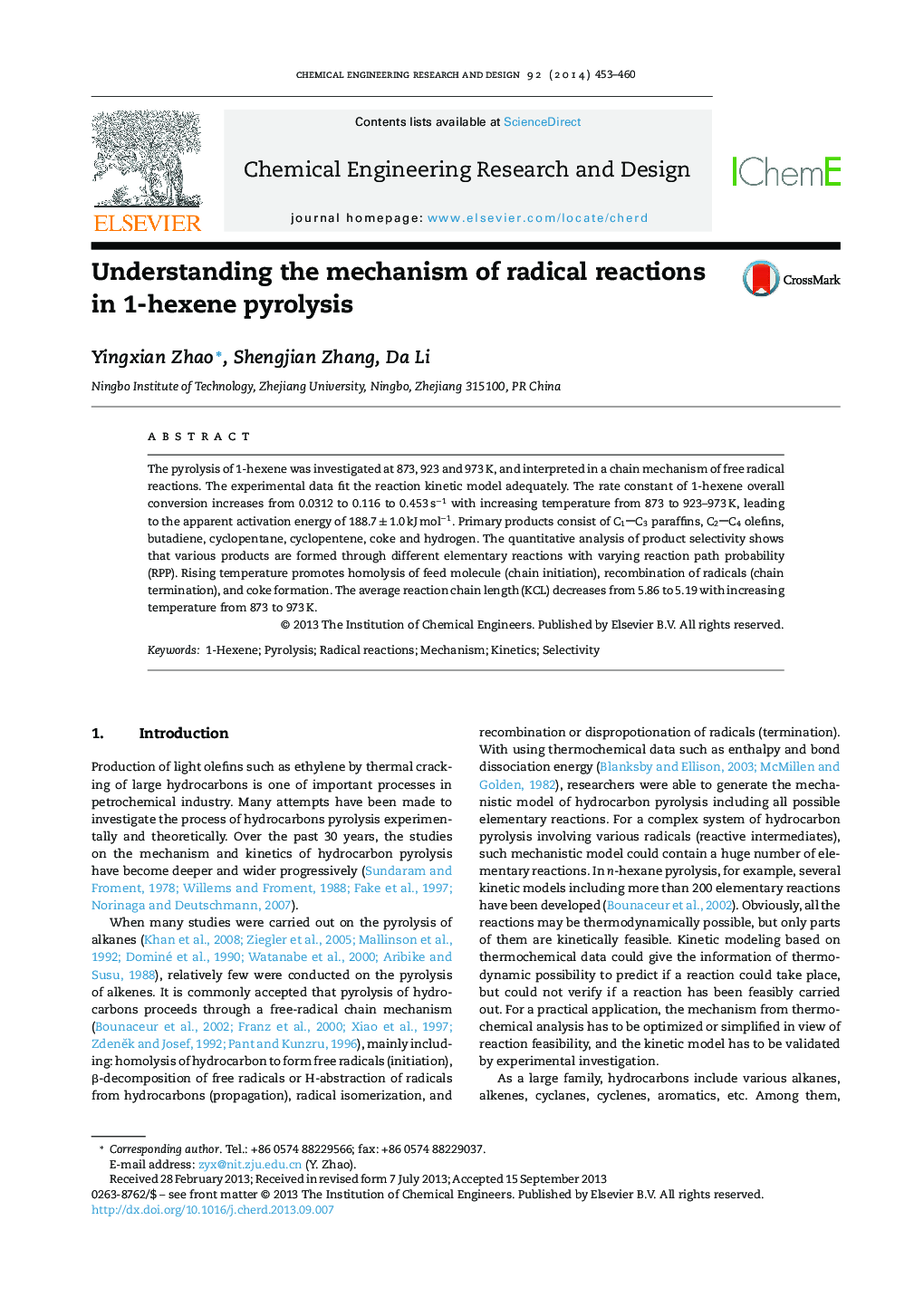| Article ID | Journal | Published Year | Pages | File Type |
|---|---|---|---|---|
| 620575 | Chemical Engineering Research and Design | 2014 | 8 Pages |
•The pyrolysis of 1-hexene followed the chain mechanism of radical reactions.•The chain reaction was initiated by homolysis of CγCδ bond in 1-hexene molecule.•The rate constant of 1-hexene conversion was determined to be 0.0312 s−1 at 873 K.•Activation energy of feed conversion reaction was 188.7 kJ mol−1 over 873–973 K.•The average reaction chain length decreased from 5.86 at 873 K to 5.19 at 973 K.
The pyrolysis of 1-hexene was investigated at 873, 923 and 973 K, and interpreted in a chain mechanism of free radical reactions. The experimental data fit the reaction kinetic model adequately. The rate constant of 1-hexene overall conversion increases from 0.0312 to 0.116 to 0.453 s−1 with increasing temperature from 873 to 923–973 K, leading to the apparent activation energy of 188.7 ± 1.0 kJ mol−1. Primary products consist of C1C3 paraffins, C2C4 olefins, butadiene, cyclopentane, cyclopentene, coke and hydrogen. The quantitative analysis of product selectivity shows that various products are formed through different elementary reactions with varying reaction path probability (RPP). Rising temperature promotes homolysis of feed molecule (chain initiation), recombination of radicals (chain termination), and coke formation. The average reaction chain length (KCL) decreases from 5.86 to 5.19 with increasing temperature from 873 to 973 K.
